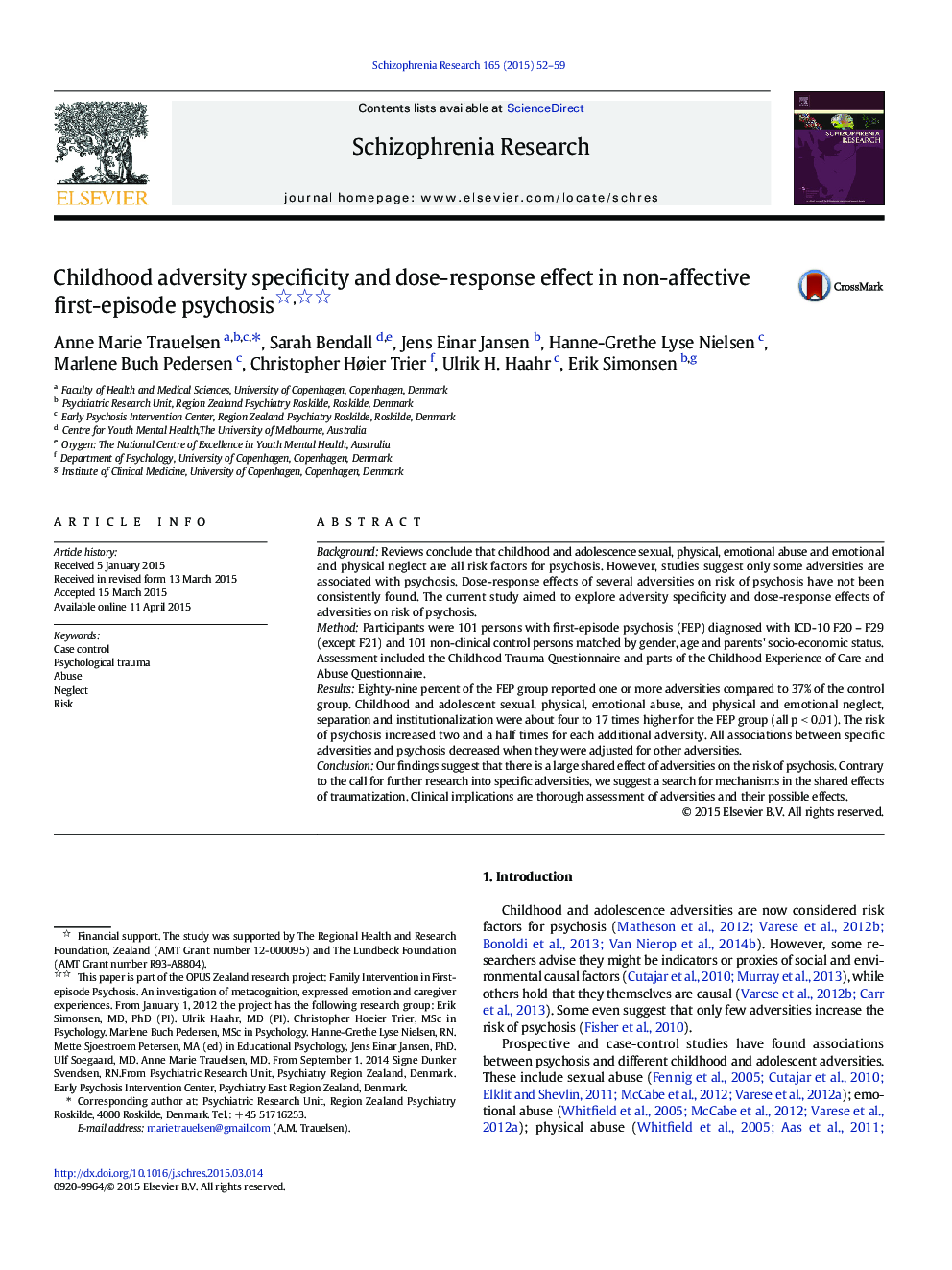| کد مقاله | کد نشریه | سال انتشار | مقاله انگلیسی | نسخه تمام متن |
|---|---|---|---|---|
| 341071 | 548456 | 2015 | 8 صفحه PDF | دانلود رایگان |
BackgroundReviews conclude that childhood and adolescence sexual, physical, emotional abuse and emotional and physical neglect are all risk factors for psychosis. However, studies suggest only some adversities are associated with psychosis. Dose-response effects of several adversities on risk of psychosis have not been consistently found. The current study aimed to explore adversity specificity and dose-response effects of adversities on risk of psychosis.MethodParticipants were 101 persons with first-episode psychosis (FEP) diagnosed with ICD-10 F20 – F29 (except F21) and 101 non-clinical control persons matched by gender, age and parents' socio-economic status. Assessment included the Childhood Trauma Questionnaire and parts of the Childhood Experience of Care and Abuse Questionnaire.ResultsEighty-nine percent of the FEP group reported one or more adversities compared to 37% of the control group. Childhood and adolescent sexual, physical, emotional abuse, and physical and emotional neglect, separation and institutionalization were about four to 17 times higher for the FEP group (all p < 0.01). The risk of psychosis increased two and a half times for each additional adversity. All associations between specific adversities and psychosis decreased when they were adjusted for other adversities.ConclusionOur findings suggest that there is a large shared effect of adversities on the risk of psychosis. Contrary to the call for further research into specific adversities, we suggest a search for mechanisms in the shared effects of traumatization. Clinical implications are thorough assessment of adversities and their possible effects.
Journal: Schizophrenia Research - Volume 165, Issue 1, June 2015, Pages 52–59
